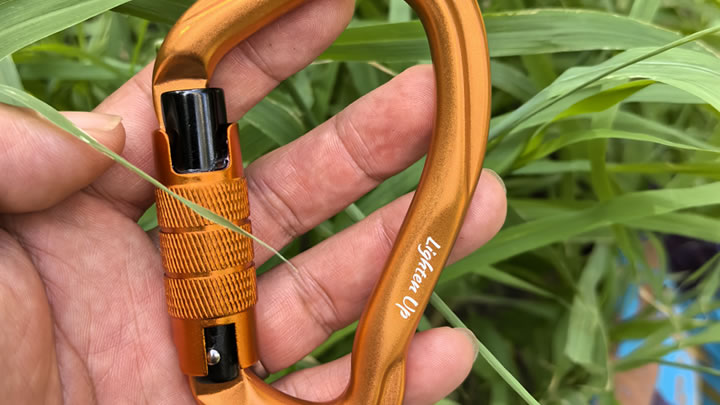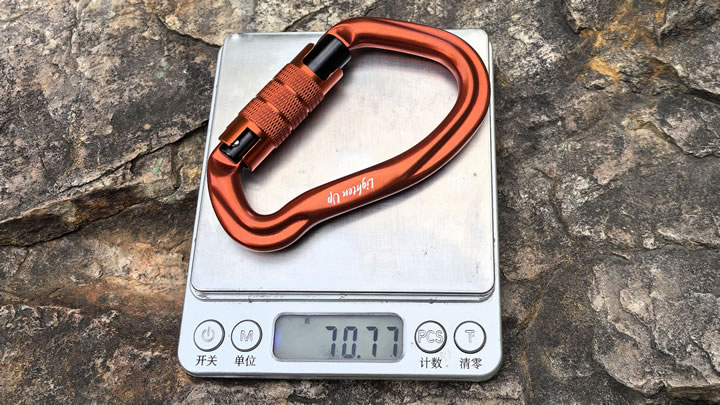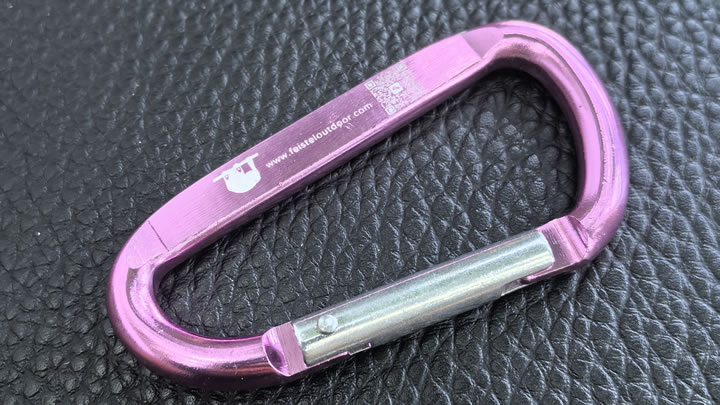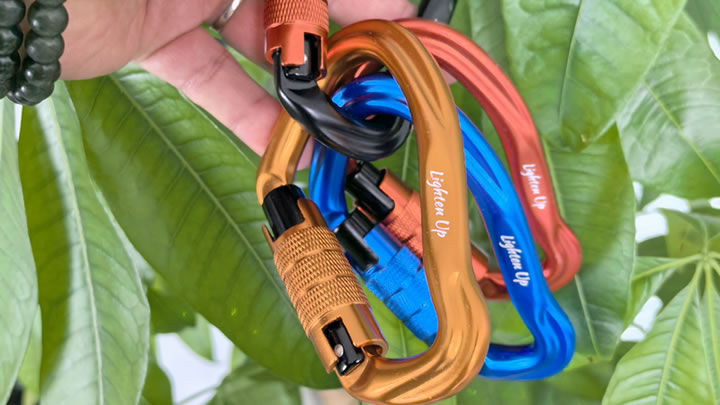What weight can a standard carabiner clip hold?
Carabiners are essential pieces of equipment for a wide range of activities, from climbing and hiking to industrial work and DIY projects. Their ability to securely fasten and hold various loads makes them a go - to tool. However, the question of what weight a standard carabiner clip can hold is not straightforward, as it depends on several factors.

Understanding Carabiner Ratings
Carabiners are not rated in terms of weight but rather in terms of force, measured in kilonewtons (kN). One kilonewton is approximately equal to 225 pounds of force. This rating system is crucial because it accounts for the dynamic forces that a carabiner may experience, such as sudden impacts or the forces generated during a fall.
Minimum Strength Requirements in Climbing
In the world of climbing, safety is of utmost importance. The International Climbing and Mountaineering Federation (UIAA) has set minimum strength standards for carabiners used in climbing. For the major axis (the direction in which the load is typically applied when climbing, such as when connecting a rope to an anchor or a harness), a carabiner must have a minimum strength rating of 20 kN. This equates to roughly 4,500 pounds of force. In practical terms, this means that a climbing - rated carabiner should be able to withstand the forces exerted during a fall by a climber, including the additional forces generated by acceleration due to gravity.
Minor Axis and Open - Gate Ratings
The minor axis of a carabiner is much weaker compared to the major axis. UIAA - compliant carabiners typically have a minimum minor - axis strength rating of 7 kN, which is approximately 1,575 pounds of force. The minor axis is the direction perpendicular to the major axis, and loads applied in this direction can significantly reduce the carabiner's effectiveness. For example, if a carabiner is accidentally loaded across the minor axis during a climbing maneuver, it may be more likely to fail.
The open - gate strength rating is also important. When the gate of a carabiner is open, its strength is reduced. The minimum open - gate strength rating for climbing - rated carabiners is usually 6 - 7 kN. This rating ensures that if the gate of a carabiner accidentally opens during use, it can still withstand a certain amount of force without breaking.
Factors Affecting Carabiner Capacity
Material
Carabiners are commonly made from two main materials: aluminum and steel. Aluminum carabiners are lightweight, which makes them popular for activities like climbing and backpacking where every ounce counts. However, they generally have a lower strength - to - weight ratio compared to steel. Aluminum carabiners used in climbing typically have strength ratings in the range of 20 - 30 kN on the major axis.
Steel carabiners, on the other hand, are much stronger. They can withstand higher forces and are often used in industrial applications or situations where maximum strength and durability are required. Steel carabiners can have strength ratings of 30 kN or more on the major axis. However, their heavier weight can be a drawback for activities that require portability.
Design and Shape
The design and shape of a carabiner also play a role in its load - bearing capacity. D - shaped carabiners are the most common type used in climbing. Their design maximizes the strength of the major axis by distributing the load more evenly. The flat sides of the D - shape help to prevent the carabiner from rotating under load, ensuring that the load is applied along the strongest axis.
Oval - shaped carabiners, while less common in climbing, have a more symmetrical design. They are often used in applications where loads may be applied from different directions. However, their strength rating on the major axis may be slightly lower compared to D - shaped carabiners, typically around 18 kN.
Pear - shaped carabiners are often used in belaying systems. Their unique shape allows for better handling and can also withstand significant loads, with major - axis strength ratings similar to D - shaped carabiners, around 20 kN.
Usage and Environmental Conditions
How a carabiner is used and the environmental conditions it is exposed to can also affect its ability to hold a load. If a carabiner is subjected to repeated impacts, such as in high - use industrial settings or during multiple falls in climbing, its strength may gradually degrade over time.
Environmental factors like moisture, temperature, and chemical exposure can also impact a carabiner's performance. For example, non - stainless steel carabiners may rust when exposed to moisture, which can weaken the metal and reduce its load - bearing capacity. Aluminum carabiners, while generally corrosion - resistant, can be affected by certain chemicals or extreme temperatures.
Practical Applications and Choosing the Right Carabiner
Climbing and Mountaineering
In climbing and mountaineering, using a carabiner with the appropriate strength rating is crucial for safety. Climbers must ensure that their carabiners are UIAA - or CE - certified, indicating that they meet the necessary safety standards. For lead climbing, where the risk of a long fall is higher, climbers should use carabiners with higher strength ratings. For example, a climber weighing 150 pounds can generate a force of over 1,500 pounds during a fall due to acceleration. A high - quality climbing carabiner with a 20 kN (4,500 pounds of force) rating on the major axis is designed to withstand such forces.
Backpacking and Camping
In backpacking and camping, carabiners are used for a variety of purposes, such as securing gear to a backpack or hanging a food bag to keep it away from wildlife. While the forces involved are generally much lower than in climbing, it's still important to use a carabiner that is in good condition. A lightweight aluminum carabiner with a lower strength rating may be sufficient for these applications, as long as it is not overloaded.
Industrial and DIY Applications
In industrial settings, carabiners are used for tasks like lifting and rigging. Here, steel carabiners with high strength ratings are often preferred to ensure safety and reliability. In DIY projects, such as creating a homemade pulley system or hanging heavy objects, it's essential to choose a carabiner that can handle the expected load. Always check the manufacturer's specifications and ratings when using a carabiner for any application.
In conclusion, the weight a standard carabiner clip can hold is determined by its force rating, which is influenced by factors such as material, design, and usage conditions. Understanding these factors is essential for choosing the right carabiner for your specific needs and ensuring safety in any activity where a carabiner is used.






